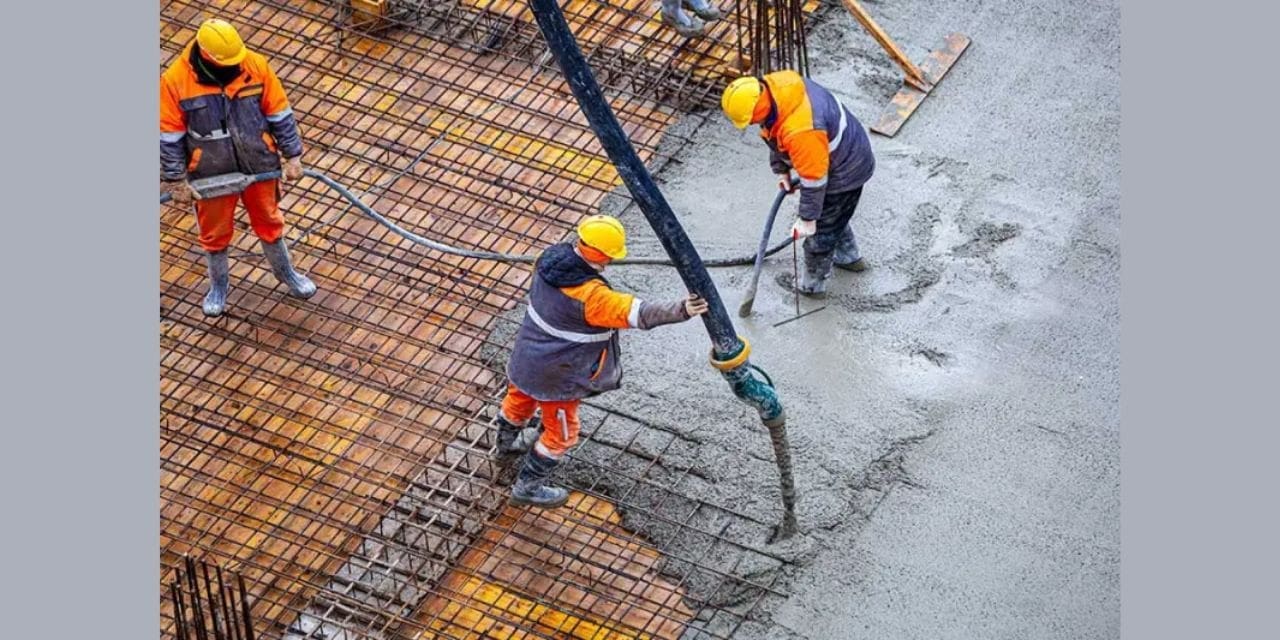Weather can affect the concrete powering process because many environmental factors such as temperature humidity and rain can damage the setting and curing of concrete. To avoid such situations, construction builders often use calculators in the process of mixing and adjusting the concrete.
It is the best choice to use a calculator for strengthening adurability of concrete. The concrete calculator can help you determine the correct amount of water, cement, and other materials according to specific weather conditions.
After adjusting, the construction team ensures that the concrete has been set properly. Doing all this leads to successful and long-term construction projects. If the adjustments are not done properly, they lead to cracks in the concrete.
UNDERSTANDING WEATHER VARIABLES:
Understanding climate change requires consideration of factors affecting atmospheric conditions such as temperature, humidity, precipitation, and wind speed. These factors play an important role in industries by influencing the concrete pouring process.
Different instruments like thermometers, barometers, hygrometers, anemometers, and rain gauges are used to measure these variables. The concrete calculator allows you to determine the amount of concrete required for a project and can account for different shapes. Meteorologist needs to study these variables to understand the behavior of the atmosphere so that they can better predict the weather.
TEMPERATURE’S INFLUENCE ON CONCRETE:
An increase in time and a decrease in fall and flow diameter were observed, indicating that increasing concrete curing temperature increases initial contraction strength. In short, evaporation is caused by heat and this leads to cracks in the concrete this problem occurs when the nighttime temperature drops much lower than the daytime temperature, causing the concrete to expand and shrink too quickly, leading to cracking.
Temperature is very important for pouring concrete. Ice should not form inside the mix while pouring concrete. Keeping the air temperature at least three degrees lower will prevent ice formation within the mix which will make the concrete much stronger.
FIVE PHASES OF HEAT EVOLUTION IN CONCRETE:
| Portland Cement Phases | Abbreviation (Chemical Formula) |
| Dicalcium silicate | C2S |
| Tricalcium silicate | C3S |
| Tricalcium aluminate | C3A |
| Tetracalcium aluminoferrite | C4AF |
| Calcium sulphate * | CaSO4, CaSO4·2H2O (gypsum), CaSO4·½H2O |
Calcium sulfate resents only 10 % in the cement mass while the remaining four phases are basic compounds of the Portland cement, a slight change in them can change the mass friction of the cement.
HOT WEATHER CONCRETE:
Concreting in hot weather requires various precautions to be taken to ensure proper handling, placement, and transportation otherwise it can adversely affect your concrete. The concrete calculator evaluates how many bags, yards, or cubic meters are needed for a specific project.
Some of these conditions are:
- Increased water demand
- Increased rate of slump loss
- Increased rate of setting
- Increased tendency for plastic shrinkage cracking and drying shrinkage cracking
- Lower ultimate strengths
- Decreased durability
- Undesirable surface appearance
As per the program outlined by ACI Committee 305 1.2.1, these are some of the factors that can cause deterioration of freshly mixed and hardened concrete with determinantal results. It can increase the rate of moisture and cement hydration.
- High ambient temperature
- High concrete temperature
- Low relative humidity
- Wind velocity
HOW DOES THE WEATHER AFFECT CONCRETE?
Concrete material is expanded and contracted by weather changes. The material cools by contraction and expands by heat. Weather changes affect the curing process greatly some factors which are given below are necessary for the setting of the process
Temperature:
Extreme temperatures in both hot and cold conditions affect the performance of concrete. Hot temperatures can cause the concrete to set too quickly, leading to cracks in the concrete. Cold temperatures thin the concrete, which greatly slows the curing process.
Humidity:
The main reason for slowing down the curing process is highly humidated which affects the strength of concrete while high humidity causes rapid evaporation in the mixture, which can lead to cracking of the surface.
Wind Speed:
The rate of evaporation is also affected by wind. As the rate of evaporation is increased in hot temperatures, the concrete surface dries out, thus adversely affecting curing uniformity.
Precipitation:
Rain or snow during the setting phases dilute the concrete, making the mixture weaker. A weak mixture leads to building defects.
Freezing Conditions:
During the curing process in cold weather, the water in the concrete freezes due to the temperature, which leads to structural damage.
LAST WORDING:
Understanding climate change is also very important for a better curing process. The concrete calculator takes into account several climatic factors during the curing process such as temperature, humidity, and wind speed can improve curing adjustment. To ensure the proper curing of the concrete, the construction builder shall make the above adjustments so that the concrete meets the needs of strength and durability.

